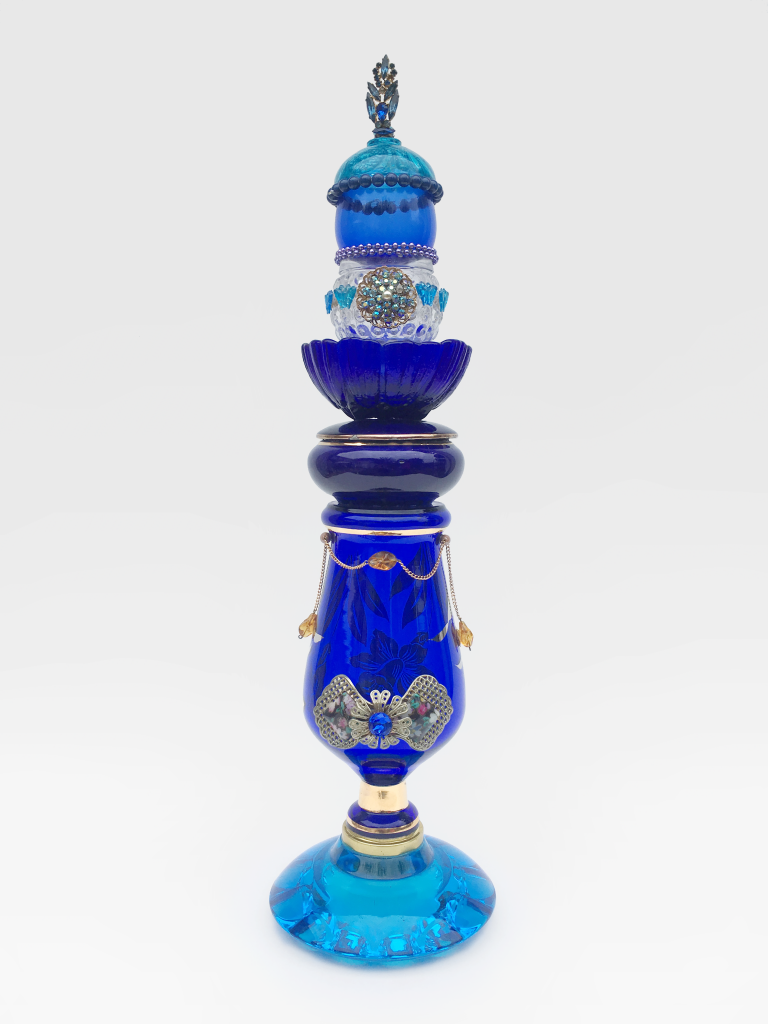Exhibition / OTIS LAUBERT
Drafter, collage artist, hunter and recycler, occasional poet, pseudo-screenwriter and, as the current exhibition at NOVA Gallery shows, sometimes a “glass artist”.

This year Baroque, idea 2009 – realisation 2015, archive Otis Laubert
A “self-made man” who has taken his place in the canon, Otis Laubert (1946, Valaská) is a universal artist who continually surprises as he responds to changing circumstances – a person of extraordinary sensitivity to the transience of the things we throw away, which he himself prefers to call forgotten objects. He obtains material for his legendary depository (simultaneously a studio, “museum” and work in its own right) mainly from the street and to some extent from flea markets and his friends. Although he now makes only sporadic additions to his depository, innumerable items of the most diverse sorts that has collected since the 1960s, are still waiting for the magical moment when they acquire a new significance. Let us take a closer look at this depository. While museum theory typically treats the depository as a sort of “black box” where collected artefacts are absorbed and neutralised, Laubert’s depository pulses with potential, energy and creative possibilities. Working with found objects – appropriating, repositioning and repurposing them – has become a part of his destiny. Although he argues that collecting is only a tiny part of his life’s work, collages and assemblages of found objects are the best known and, I believe, most representative, of Otis Laubert’s works. In fact, the present exhibition is evidence of this.
Glass is the unifying theme of this exhibition. However, it is not the sort of carefully curated collection of glass artefacts built up over time that our (in a past) glass-oriented gallery usually specialises in. Laubert is a joker and a fabulist. He maintains a free and open relationship with the objects and materials he works with. He sees the same expressive value in glass, traditionally regarded as relatively exclusive material for sculpture (and an expensive item to purchase), as in plastic. This more abstract approach and perspective helps to open new dimensions for glass with hidden correspondences and novel meanings. The space available in the gallery means that only a fraction of Laubert’s work engaging with glass can be shown. The exhibition combines older items with ideas from Laubert’s journals, which are just as important as the depository for the understanding of his work. He treats every object in a different way, detecting different contexts and different solutions. At the heart of his approach, however, there is always the idea of discovery: a “chance encounter” whereby an ordinary item that has been made redundant, forgotten or otherwise discarded is brought back to a life by combination with other objects, small modifications, or a shift of meaning. Glass may feature as a mirror in which a plastic animal has “lost its head”, used medicine bottles transformed into pickling jars in “Mrs Morandi’s Kitchen” or an old television screen showing the “Jablonec regional programme”. These works are not designed to communicate serious concepts but function as part of Laubert’s programme to give ordinary things new life through play. It is a matter of the artist’s perspective: Laubert’s life and art are linked and the latter is produced through the former. Another way to look at it is as a game of hunting for new meanings. Viewers are invited to join the hunt, rekindle their imagination and revive the creative, magical way of seeing that they had as children. It can also be seen in the way Otis typically plays with words in the exhibition title: It’s fine in the fridge, the glass is cool. Cheers!